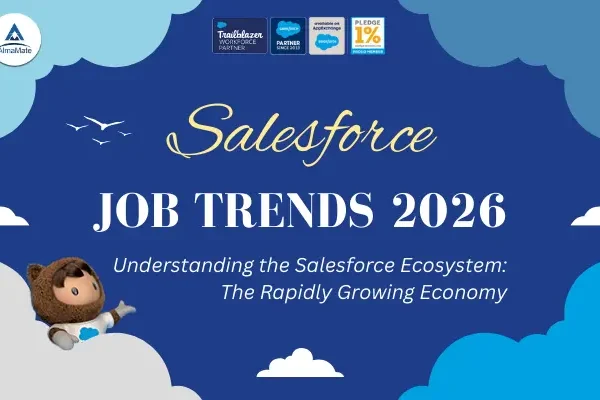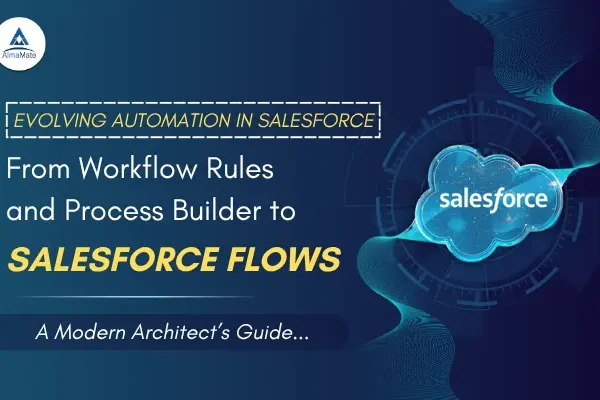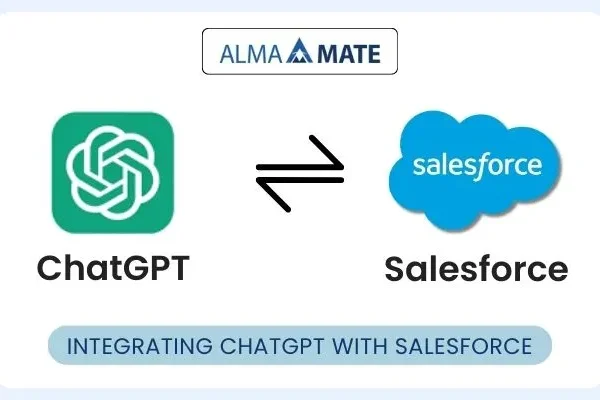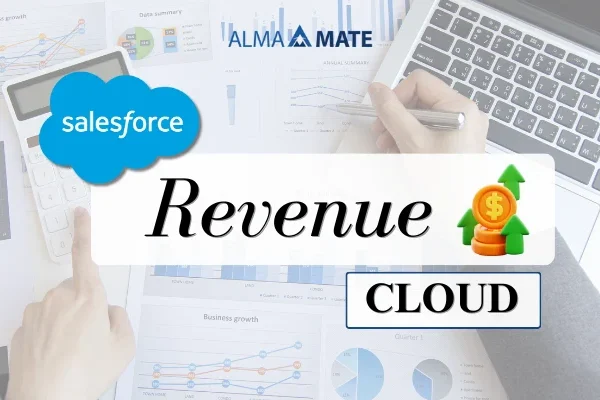A Salesforce Flow is an automation tool that administrators and developers can use to automate business processes and workflows. Such a powerful automation tool makes it possible for organizations to become more operational, look much better in terms of user experience, and become notably efficient. In this article, we will learn about Salesforce flows, their common features, and when to apply them.

What is a Flow in Salesforce?
Salesforce Flow is an offering within the Salesforce tool for automating business processes. It enables users to create a workflow with several point-and-click options. It can be used to build business logic that responds to record change events, automate repetitive tasks, and bind together numerous other applications. By using Salesforce Flows, users can streamline processes carried out manually, build customized user experiences, and maintain consistency in data handling.
Types of Flows
Each one of the Salesforce flows addresses a particular need and is therefore better for a specific type of use case. Let’s take a closer look at all the different kinds of Salesforce flows:
1. Screen Flows:
Screen Flows are interactive flows that accept user input through a series of screens that are designed to take users through a specific process such as setting up a new record, gathering customer feedback, or processing customer info. Screen Flows must have some form of user interaction and are mostly found on Lightning pages or are opened using buttons and quick actions.
Key Features:
• Guided Flow: Used for advanced processes that have to be guided step-by-step.
• Flexible Launch Options: May be launched from Lightning pages, buttons, and tabs.
Best Use Cases:
• Case Creation Wizard: Can guide a service representative through the case creation process.
• Survey Collection: Collect customer feedback after making support/service calls.
• Lead Qualification Process: Qualify leads by gathering information through a series of screens.
2. Record-Triggered Flows
Record-triggered flows are salesforce flows triggered automatically when a specific change is made to a Salesforce record, such as when a record is created, updated, or deleted. It can be set to perform actions according to the criteria selected by the user for real-time automation when changes are made to records.
Key Features:
• Real-Time Triggers: Triggered immediately when a record is created or updated.
• Declarative Logic: Supports Complex Conditions and Branching based on Record Data.
• Asynchronous Actions: Available option, which can defer some actions to improve efficiency.
Best Use Cases:
• Auto-Opportunity Management: Update the status of related records when an opportunity is closed.
• Lead Assignment: Auto-assign leads based on conditions such as location or product interest.
• Contact Update Notifications: Notify the concerned team whenever a contact’s information is edited.
3. Schedule-Triggered Flows:
Schedule-Triggered Flows are those salesforce flows, that run at a specified time and frequency. They do not require any specific record event to be triggered because they are different from record-triggered flows. Schedule-triggered flows are applied for batch automation of any process like routine data updates, maintenance tasks, and large-scale record manipulation.
Key Features:
• Scheduled Execution: Set to execute at particular time intervals, like daily, weekly, or monthly.
• No Manual Trigger: They run absolutely, without relation to user activities or changes made to records.
• Batch Processing: Can process huge numbers of records based on specified criteria in one go.
Best Use Cases:
• Data Cleansing: Automatically delete or archive old records.
• Weekly Reports: Produce and mail reports automatically at regular intervals.
• Field Updates: Update certain fields of multiple records periodically.
4. Auto-Launched Flows:
Auto-Launched Flows are Salesforce flows that automatically trigger without user input or interaction. They can be invoked through processes, Apex code, REST API calls, and platform events. Auto-Launched Flows are flexible and are used in situations where automation is needed but no screen-based interaction is required.
Key Features
• No Screens Required: Runs without any user input or interaction.
• Flexible Invocations: Can be called by different mechanisms like Apex, processes, or REST API calls.
• Automated Task Handling: Ideal for backend processes that run in the background.
Best Uses:
• Order Fulfilment: Generates order records automatically based on given criteria.
• Field Value Calculations: Can compute and update fields based on certain conditions.
• Email Notifications: Can send automated emails to customers or team members based on events happening or changes being made to records.
5. Platform Event-Triggered Flows:
Platform Event-Triggered Salesforce Flows are platform events in Salesforce. This enables external applications to interact in real-time with Salesforce. Whenever the event message is published, it can initiate a flow and further activities; this flow is useful for integrations with other systems.
Key Features
• Event-Driven: It is triggered by a platform event, and not based on user or record actions.
• External System Integration: Supports alerting of Salesforce against changes in external systems.
• Real-Time Processing: Synchronous processing at high speed and with changes made to data in real-time.
Best Use Cases:
• Payment Processing: Obtain payment confirmation from the external payment system.
• Shipment Tracking: Update shipment status on Salesforce when a logistics provider transmits a status update.
• Customer Interaction Logs: Record external interactions like messages on web chat as records in Salesforce.
6. Record-triggered Orchestration Flows
Record-triggered orchestration is a type of orchestration in Salesforce Flow Orchestration that automatically runs when a specific record is created or updated. It automates tasks and processes based on the record data.
Key Features
• No-code tool: Salesforce Flow Orchestration is a no-code tool that combines automated processes into a single workflow. It turns each flow into a step in the process and organizes them into stages.
• Orchestration status: When an orchestration runs, it can be completed, canceled, end due to an error, or remain in progress.
• Continuous monitoring: Flow Orchestrator allows for continuous monitoring and enhancement of orchestrations.
Best Use Cases
• Multi-step processes: Orchestrate multi-step processes that involve multiple users and systems
• Task lists for groups: Use orchestration to create task lists for groups
• Auditing: Use orchestration to audit the execution of a process
Advantages of Utilizing Salesforce Flows:
Salesforce Flows help companies save and reduce their time and processes for managing in-house tasks:
1. Save Time: Automate monotonous tasks and help your employees focus on high-value activities.
2. Error Prevention: Salesforce flows introduce lesser scope for human errors and ensure that the data entered is correct.
3. Better User Experience: Screen Flows can, in particular, make it easier for users to navigate through complicated processes.
4. Quality of Data: Automated data handling helps with keeping the records updated and accurate.
5. Seamless Integration: With Platform Event or Outbound Message-Triggered Flows, Salesforce integrates seamlessly with external applications.
How to Choose the Right Type of Flow:
The type of flow that you choose would depend on the complexity of the process or the interaction of the user involved and if other external systems are to be referred to.
Here is a guide:
• If the flow depends on the input of users, then Screen Flow must be used; for the flow to activate with changes made to records.
• For scheduling-based operations (say, due date updates): Schedule Triggered Flow is the right choice.
• For backend automation (e.g., a process invoked by Apex): Auto-Launched Flow out of all Salesforce Flows is the best option.
• In case the external systems invoke this flow (e.g., updates related to payments): The correct option is the platform event-triggered flow.
• In case you want to push data from Salesforce to external systems (say data syncing): The correct option is the Outbound Message-Triggered Flow.
Conclusion:
Salesforce Flows are extremely powerful and can be used by any organization to automate the vast majority of tasks executed in an organization. With the right type of flow, it is possible to enhance the user experience, ensure data consistency, and make processes more efficient. Knowing the various types of flows and what can be done with them will greatly improve the efficiency of an organization.
Unlock your future in the digital economy with AlmaMate’s industry-leading Salesforce training! Master key tools like Salesforce Flows and gain Salesforce Data Cloud Certification to propel your career forward. From Screen Flows and Record-Triggered Flows to Platform Event-Triggered Flows, our hands-on curriculum equips you to automate business processes and deliver impactful solutions. Join AlmaMate today and become an indispensable asset in any organization by building your expertise in the future of data and automation!
Unlock your potential with AlmaMate’s Salesforce Certification Course, the leading Salesforce Training Institute in Noida! Gain hands-on experience with Salesforce Developer Training, Salesforce Admin Training, and more. Whether you’re looking for the Best Salesforce Training in Noida or prefer Salesforce Online Training in Delhi NCR, AlmaMate has you covered. Elevate your career and join the ranks of top Salesforce professionals with our comprehensive curriculum and expert-led sessions. Enroll today to take the next step in your Salesforce journey!
Disclaimer**: The images placed on this web page have been sourced from pexels.com for illustrative purposes only.















